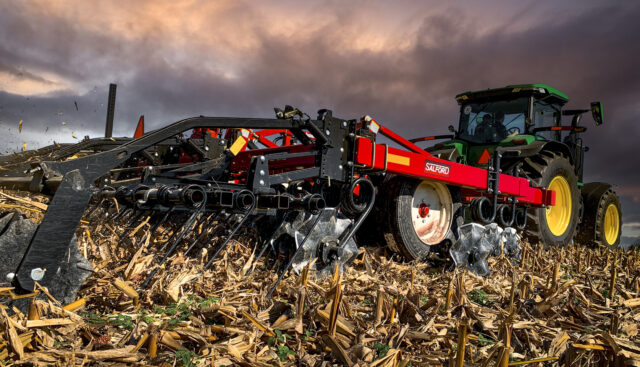Spring field conditions are the clearest way to see the results of last year’s fall tillage. And, if after rolling across your acres, you’re left wondering ‘what if’, then maybe it’s time to re-evaluate your fall tillage tools. Sure, we’re a little biased about our machines, but so is Micah, a farmer in Minnesota who, since purchasing his I-2100 in 2012 has been able to boast about his ideal spring seedbed conditions – all thanks to using this Salford machine for fall tillage. “I’ve got consistently smooth, flat spring seedbeds every year after running the I-2100 over my corn and soybean fields each fall,” explains Micah. “These field conditions are ideal for early drying in the spring, allowing me to jump in the tractor and get on the field when I need to.”
INVEST IN THE FALL
Fall tillage sets the stage for spring planing. And if the fields are left with ruts, soil clumps or too much residue before winter, spring field work can be challenging. Since investing in his I-Series machine, Micah has reduced his tillage equipment line up, replacing a v-ripper, cultivator and hydra span with his Salford machine. He says he’s been able to achieve the same or better field finish using only the Salford machine thanks to the versatility of the equipment and the ability to pick up the shanks but leave the coulters in the ground when he needs to. “I’ve doubled or tripled my productivity using the I-2100, covering ground at faster speeds while achieving great seedbeds.” Micah says he runs his I-2100 at 60 acres per hour and continues to be impressed with its durability year after year. In fact, he’s only had to replace one bearing in the nearly twelve years of operating the machine. Micah sums up his top three fall tillage requirements.
All crop residue must be worked within the top three to four inches of the soil, no deeper. Incorporating residue into the field is important to manage the valuable organic matter and keep it from blowing off the fields entirely.
Fine the most efficient way to get across the field. That means working with the best equipment to increase ground speed, achieve the desired field finish in one pass or, in some cases, not at all.
A level seedbed is a must. Germination and uniform crop emergence all rely on proper seed to soil contact, so eliminating uneven ground like ruts and breaking up soil clumps is essential to achieving the ideal seedbed.
DO THE MATH
Like most farmers, time is money for Micah. While he’s been impressed with Salford’s durability, he also notes the low maintenance requirements too. “I’ve been running the same coulters across more than 10,000 acres and they are still performing,” he says. Micah also measures his productivity by the number of hours spent in a tractor in his field. That means, if he can find a way to increase ground speed or reduce the number of passes across a field, he’ll find it. “I can go faster using the I-2100, and in some years, the fall pass is enough to set the seedbed for spring planting, eliminating the need to till the field again in the spring. That’s a win-win for me.”
SPRING FORECAST
The best spring seedbed conditions should be flat and free of clumping soil or crusting, allowing for ideal seed to soil contact to promote plant germination. Sometimes that can be achieved through fall tillage, especially using a no-till planting approach, while others require spring tillage to achieve ideal conditions. And the more field work required, the smaller the spring planting window. Micah shares another example where he’s been impressed with the I-2100 during spring planting. “I’ve been able to work 1,000 acres ahead of the corn planter, get a light rain, and not worry about soil conditions or crusting. The machine works the ground just right that I don’t have to rework that same field after a rain,” he explains. “I tell all my neighbors about this machine,” says Micha, noting many of them has since invested in their own I-Series models. “I don’t know why anyone wouldn’t have a Salford.”
